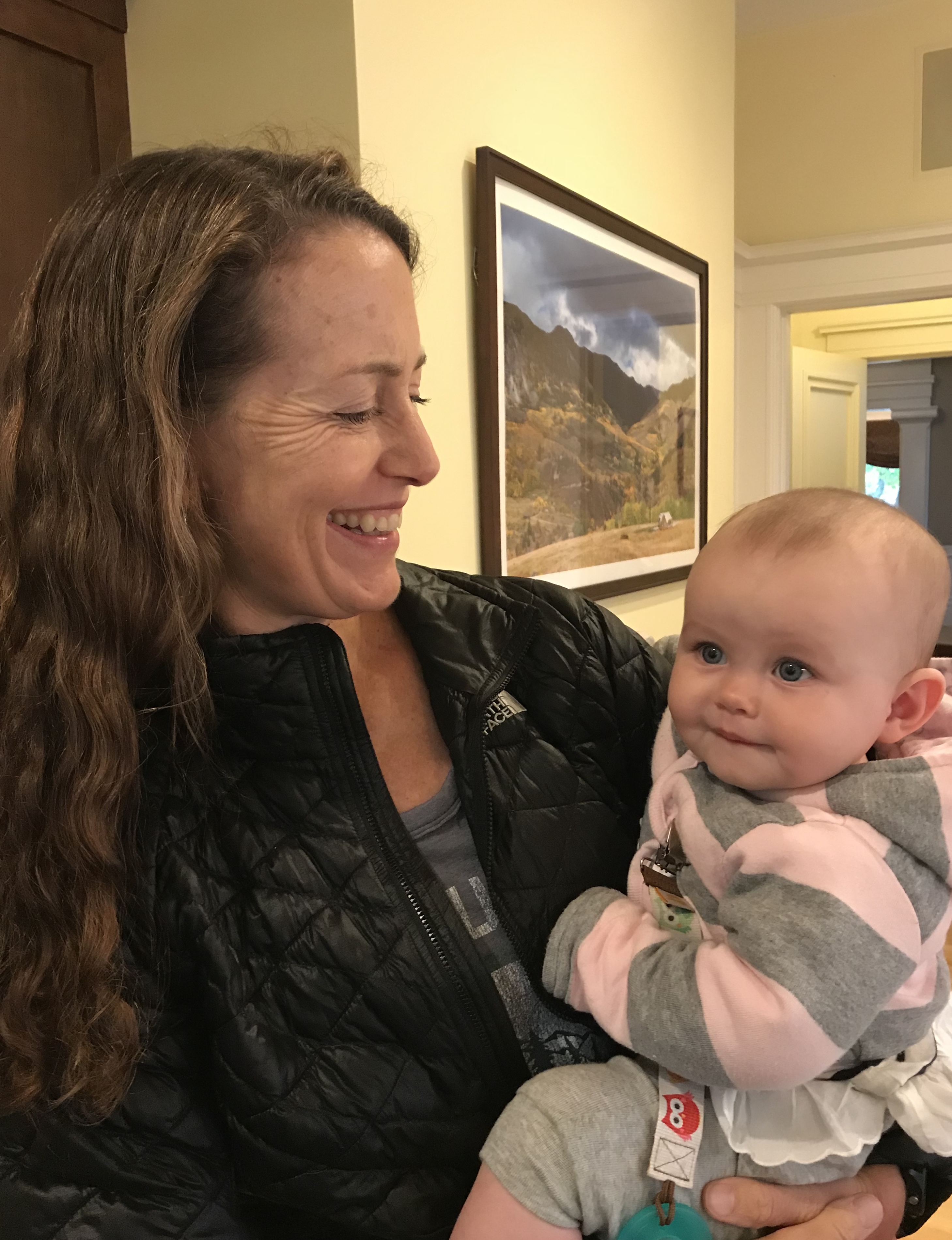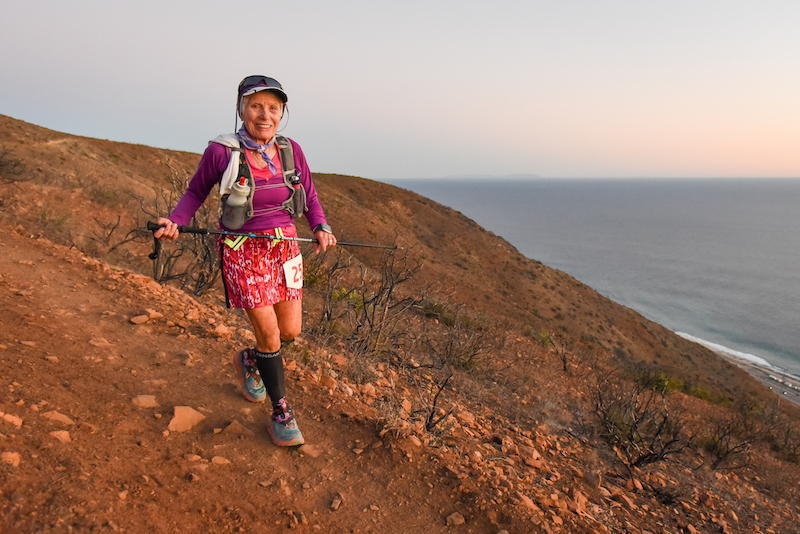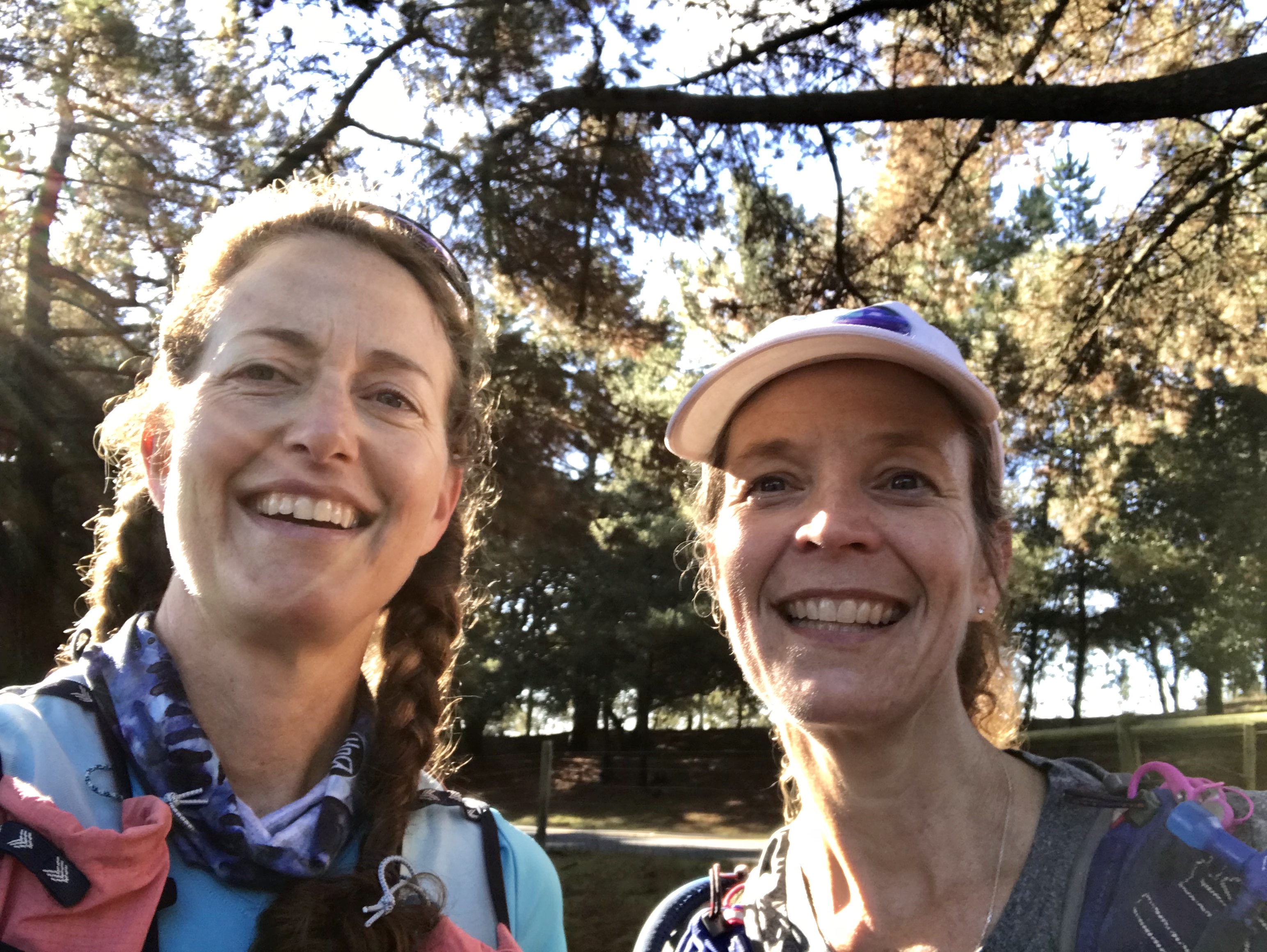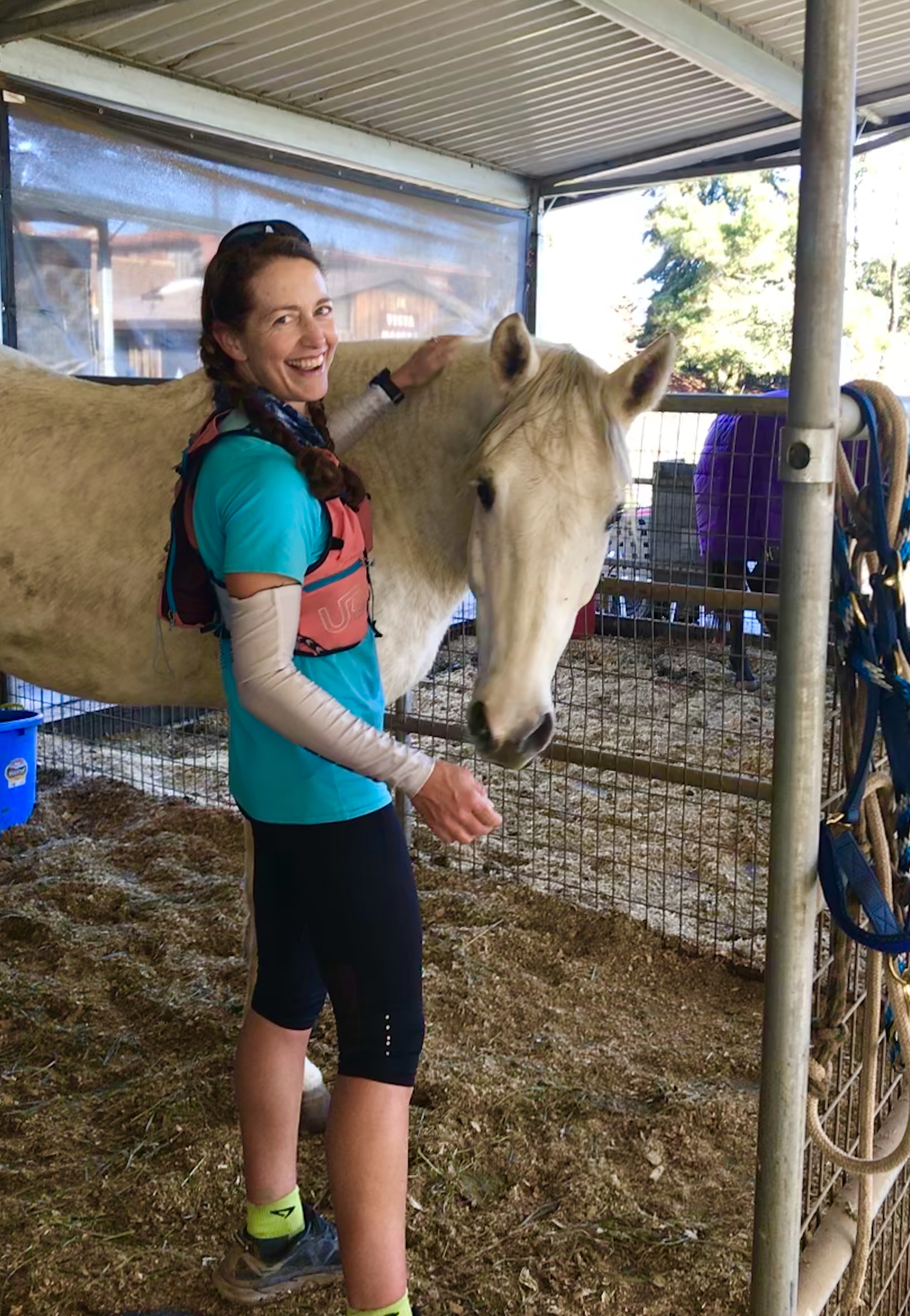Earlier this week, I charged up the East Ridge Trail in Redwood Regional Park, three-quarters through an out-and-back route that’s 7.5 miles total. The way back is harder because it’s more uphill, and I was going for a negative split, which meant faster in the second half.
Finally, my sore hamstring decided to calm down and behave. Finally, I felt some power when I pushed off and accelerated on a flat stretch. A light rain the day prior made the footing perfect, springy and slightly tacky, and the eucalyptus and grassy brush boarding the trail looked fresh and saturated with color against the blue sky.
Finally, after months of lackluster running and low motivation, I felt a runner’s high.
I ran the second half 25 seconds better than the first, in spite of the elevation gain, and let loose a “fuck yeah!” in honor of Shalane. It crossed my mind that years ago, I used to run this whole segment a few minutes faster, but I pushed that thought away and focused on feeling strong and satisfied.
As I caught my breath and got ready for a set of 30-second hill strides on the Stream Trail’s slope up to Skyline Gate, a thought hit me: “I feel like my old self.”
I said it because I had been dwelling on my past self—the one who five to ten years ago ran faster and felt more fluid. When I pushed the pace along East Ridge for that negative split, I had waxed nostalgic about the time in August 2007, at age 38, when I ran my first 50K on that segment of trail. I conjured that race day’s feeling of passing others and going for a goal time to finish 4:55 on a course that had over 3500 feet of gain, 1st female and 4th overall. Yeah, those were the days.
Now, I’m running speed intervals at the track significantly slower. I push at close to max effort for the mile, and it feels like I should be clocking at least a 6:30, maybe closer to 6:20. Ten years ago, I ran mile repeats close to 6 even. Then I look at my watch and it shows 6:55. What the hell?! 6:55 was my half-marathon pace in my prime. For several months now, my easy pace has naturally defaulted to 9:30ish on the road, whereas 8 to 8:30 used to be my comfortable conversational pace.

“My old self” ten years ago: a pano of me finishing the Golden Hills trail marathon in October 2007, age 38, winning and setting a course record in 3:49 as my kids Colly and Kyle, then age 9 and 6, watch. My husband Morgan shot these images and stitched them together (click to enlarge).
I feel like my old self.
I pondered the phrase “my old self” and turned its meaning inside-out. “My old self” is my aging self right now at 48, not the person 10 years ago, and it will be my future self when I’m truly old. I need to reclaim that phrase, to let go of longing for a supposedly better version of myself from years ago, and cheer for this person who’s doing her best for a high-quality workout right here, right now.
No matter how hard I train, I am not going to run as fast as I did years ago. I can get faster than I currently am, but I won’t regain or even get close to those PR times. It’s a matter of physiology. So how can I feel better about this slower and older version of me, the one with the increasingly noticeable age spots on her forehead? The one who can’t believe her babies are 19 and 16?

How I look now, holding my niece’s adorable baby while having flashbacks to holding my daughter when she was this size in 1998.
Going up and down Stream Trail, I gave myself a pep talk. One, I need to stop measuring success by speed alone.
Think of the other metrics that matter: consistency, mileage, health stats. And the unquantifiable score of happiness. I’m doing quite well on those fronts (though I need to do more to address this nagging glute and hamstring soreness, not deny the biofeedback of stress or pain, and I will).
Two, I need to remember and celebrate all the things that this 2017 version of me did that the 2007 person couldn’t fathom.
In this year alone: the 100-miler and the Mauna to Mauna stage race. The book. The coaching business. The completion of nine years of board service. The barn building and Colorado living. I saw none of that coming when I was 38!
Three, imagine all the possibilities for the decades ahead.
A flicker of optimism pleasantly surprised me, after months of feeling perpetually pessimistic due to the relentlessly bad news related to our nation’s leadership and to catastrophes both natural and manmade. Good times surely lie ahead, maybe grandkids too. I can make things better for myself and my community. I still have decades of adventure and running, if I stay healthy. Faster or slower, who cares as long as it feels good? Running is just running, just one thing I do and love. I can keep doing this but also branch out in other directions, like riding my horse. Or months-long through-hiking. Or …
My mind spun off with big plans while I ran an extra sprint up the hill. Then I centered my thoughts with breathing and observation. Look around. Do a head-to-toe scan of how the body feels; notice the pumping heart, the sweat trickling down my chest, the rhythm of breath and footstrike working together. The site of a goofy Labrador up ahead on the trail joyfully bounding off leash. I don’t have to be as fast as I used to be to enjoy this, and I don’t need to base my success at running solely on performance at races. This, a run like today, is successful and fulfilling on so many levels.
Back home, I got out my book, The Trail Runner’s Companion, and turned to the last chapter to re-read what I had written under the subheading, “Run Trails Long and Strong No Matter What Your Age.” It begins: “One of my gray-haired trail-running friends posted a photo on social media showing him with his running buddies more than a decade earlier, when they all raced and placed at trail ultras. His caption: ‘The older we get, the faster we were.’ …”
Here are five tips I gave in that section of the book to preserve trail-running longevity. I need to remember to follow my own advice! I hope it helps you, too.
- At least once a week (except during deliberate easy-recovery or off-season weeks), have a hard workout when you run faster and/or charge up hills. Elevate your heart rate and breathing for a sustained period, past the point of being able to speak in full sentences. While slow, gentle runs and hikes definitely promote health and wellness, you will lose your cardiovascular fitness more rapidly as you age unless you deliberately work to maintain that fitness through consistent high-intensity workouts.
- Maintain a dynamic stretching routine to warm up and work through stiffness before each run, and a post-run static stretching routine with physical therapy exercises to preserve flexibility and prevent injury (described in Chapter 5).
- Maintain a strength conditioning routine two to three days a week to preserve muscle strength and bone density (also described in Chapter 5).
- Keep racing trails, but temper your expectations. Trail races serve as great high-intensity workouts, and the social support at the event is motivating. Every five years, as you graduate to a new age group (e.g. 50 – 55), challenge yourself to set a new personal record in that age bracket for that distance, rather than dwelling on faster personal records from your earlier years.
- Allow for extra recovery time after a race or a hard workout; do a low-impact activity instead of running until you feel fully recovered from the hard effort.

This is the final photo that appears in my book, with this caption: Octogenarian ultrarunner Patricia Devita has run more than 120 trail races. Photo by Howie Stern
If find the woman in the photo above, Patricia Devita, incredibly beautiful, and I want to be like her three decades from now.
On yesterday’s trail run with my friend Jennifer, we ran to the barn to visit our family horse Cobalt, who just moved this week from Southern California (where my son had been riding him at The Thacher School) to Oakland for the winter, so that my husband and I can care for him. I’m excited to add riding to the athletic mix, reconnecting with my equestrian past, and to sometimes have Cobalt run and hike by my side on the trails on a lead line.
Jennifer, who just turned 49, and I talked about training and aging as we ran. We chatted a bit about the expensive slippery slope of cosmetic treatments that some of our peers start to go down, beginning with Botox, and I told her, “I’d rather spend money on a horse!”

Me with Jennifer on the trails yesterday.

Me with my new “baby,” Cobalt.

I love everything about this post, Sar.
yes, I understand…..as I age, I am getting a little slower and when I look at my times I am thinking “what the heck” but then I am finally starting to be kinder and gentler to myself and remember that I am not 30 anymore, and soon to be 56 with several decades of running. It’s OK…getting out and doing it is what matters and we’re still OK!
Wow. This was a wonderful read and much needed. I wish races did more to help us keep our competitive drive engaged. Other than age group awards it would be nice to be recognized for breaking age-based course records or age-graded performances etc. I’m having a hard time finding appropriate and motivating goals as I age. Thank you.